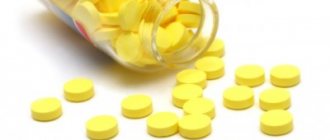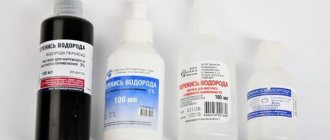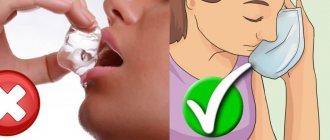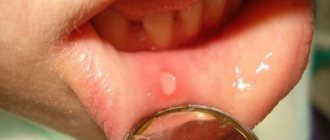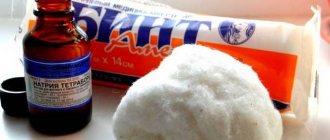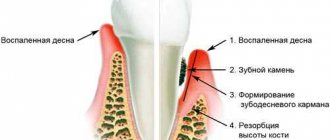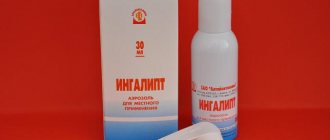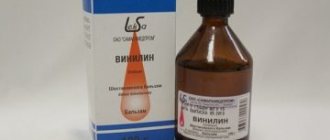What is a disease
Stomatitis is considered a lesion of the oral mucosa.
The reasons for the development of this pathology are:
- infection by infections (viruses, bacteria, fungi);
- medicines;
- autoimmune processes.
Children develop painful ulcers in their mouths. They are quite deep, but heal without scarring. If the baby has immune disorders, then the ulcerative process is continuous. Previously formed ulcers simply do not have time to heal before new ones appear. The acute process becomes chronic. That is why it is important that nutrition for stomatitis is gentle, at the same time complete and varied.
Nutrition rules
The main principle of the diet is to eat food that does not injure the mucous membranes and does not overload the gastrointestinal tract. Nutrition for stomatitis is based on the following rules:
- Maximum grinding of products - to the state of minced meat or puree.
- Heat treatment of fruits, berries, vegetables.
- Meals should be fractional; this allows the gastrointestinal tract to work in a gentle manner.
- Hot, spicy, salty foods are prohibited.
- Dishes must contain nutrients and microelements necessary to maintain immunity.
- Food should not be sour. It is allowed to consume freshly squeezed juices with a low acid content (cabbage or carrot).
- The optimal temperature of food is the same as body temperature (36-37 degrees).
- Liquid meals and drinks can be consumed through a straw. This will avoid contact with painful areas.
Preference should be given to warm porridges and purees.
After each meal, the mouth should be rinsed with water, soda solution or an antiseptic (chlorhexidine). When pain occurs, the mucous membrane is lubricated with painkillers - gels containing lidocaine.
General diet rules
A special feature of the diet for this oral disease should be food that is as neutral as possible and does not irritate the mucous membranes. It should be well crushed and have an enveloping and slimy consistency.
When organizing meals for a baby with this disease:
- It is necessary to adhere to small, frequent meals. Portions should be small, and the frequency of intake should be five or six times a day. It will be easier for the baby to eat a small portion, and it will be easier for parents to feed him.
- All food should be crushed as much as possible, and the consistency should resemble puree. Meat and fish are used only in the form of minced meat. The temperature of the food should not be higher than forty degrees, neither hot nor cold.
- Before eating, you can treat the child’s oral mucosa with products containing painkillers. You can use: Kamistad, Kalgel, Cholisal. Also, for pain relief before eating, you can give your baby Ibuprofen or Paracetamol. They will numb the mucous membrane in the mouth. You can safely feed your baby.
- After eating, be sure to rinse your mouth with water at room temperature. Then the mucous membrane is treated. For this, any disinfectant solutions are used (Furacillin, Chlorhexidine, Stomatofit, Miramistin). To do this, you can use decoctions of chamomile or sage herbs. This is done in order to disinfect the lesions and prevent the development of a secondary infectious process.
- It is necessary to apply oils to the mucous membrane that have the ability to activate reparation (recovery) processes.
It is impossible to cope with the disease with diet alone; it must be treated.
Sample menu
It is extremely important to provide the child with a sufficient amount of vitamins and minerals, therefore, during the period of illness, the mother will have to make every effort to ensure that the menu is correct and balanced.
An approximate option for six meals a day:
- liquid porridge cooked in water or milk with the addition of butter;
- baked apple (banana). As a drink, you can offer tea, jelly or infusion;
- lunch (optional): cream of chicken soup, mashed potatoes with fish or meat cutlet, pureed vegetables with added butter or cream with boiled or stewed minced meat;
- afternoon snack: cottage cheese, mashed with sour cream. Compote or tea;
- meat or fish soufflé with vegetables or pasta (chopped), sweet drink;
- any fermented milk product, for example, yogurt, fermented baked milk, kefir.
It is important to try to offer your baby his favorite foods. Even if you drink yogurt, milk, broth or anything else, this will help you avoid dehydration and severe weight loss.
Authorized Products
The diet for stomatitis in children includes certain foods that do not irritate the oral mucosa.
Proper nutrition includes:
- Vegetables (boiled, baked, steamed) - dishes made from them do not injure, do not irritate, and at the same time provide the body with vitamins and minerals. It is recommended to take vegetables with a delicate structure (broccoli, zucchini, potatoes, pumpkin).
- Fermented milk drinks and products should definitely be included in the child’s diet, but they should not contain a lot of acid. It is worth giving preference to soft neutral cottage cheese, Varenets, and fermented baked milk.
- Cereals - they are used to prepare porridges. They have an enveloping effect. They provide the body with B vitamins. The cereal must be well boiled.
- Fruits – usually choose moderately sweet, neutral, non-acidic fruits. It is better to take bananas, watermelons, melons, crumbly sweet varieties of apples and pears.
- Fish dishes - for their preparation, it is advisable to use fatty varieties of sea fish. To prepare either minced fish or steam it, remove all the bones so that the baby cannot injure the oral mucosa. Fish is a source of easily digestible protein, vitamins, microelements and polyunsaturated fatty acids.
- Meat dishes - only soft, lean types (veal, rabbit, chicken, turkey) are used to prepare them. When cooking, it is better to prepare minced meat products. Steam them or bake them in the oven. You can cook: soufflé, cutlets, meatballs.
- Liver - it can sometimes replace meat dishes; it is also better for preparing cutlets, soufflés, pates and similar dishes.
- Casseroles - can be prepared from vegetables, cereals, pasta, cottage cheese.
- Soups and broths – puree soups and low-fat broths are widely used in dietary nutrition.
- Soft cheeses are a good source of calcium. It is high in calories, easily digestible, and nutritious.
- Dried fruit compotes and jelly are a source of vitamins and microelements. It is better to replace tea with these drinks.
- Juices must be natural, freshly squeezed. To do this, it is better to take non-acidic fruits and vegetables (pears, apples, carrots).
The use of these products in a diet for stomatitis will make the diet high in calories and nutritious, at the same time gentle.
Diet goals for stomatitis
During stomatitis, the oral mucosa becomes inflamed, covered with ulcers and erosions, becomes hyperemic and swollen, sensitive even to minor adverse external influences.
In order not to provoke an increase in the inflammatory process, a diet is prescribed for stomatitis in the mouth, which has the following goals:
- rapid healing of the mucous membrane;
- reduction of pain and other discomfort;
- reduction of swelling and inflammation;
- restoration of normal microflora in the oral cavity;
- prevention of complications and subsequent relapses.
The therapeutic diet in adults and children with exacerbation of stomatitis differs only slightly. The basic principles are the same.
Sample menu for the day
A sample menu is presented to help you understand what to feed your baby.
| Eating | Dishes |
| Breakfast | 1. Sweet oatmeal with milk and butter.2. Raspberry jelly. |
| Lunch | 1. Curd casserole with jam.2. Rose hip decoction. |
| Dinner | 1. Potato puree soup with meat broth.2. Steamed fish cutlet with zucchini puree.3. Dried fruits compote. |
| Afternoon snack | 1. Pudding with fruit puree |
| Dinner | 2. Chicken soufflé with stewed cabbage.3. A glass of Varentz. |
Food should be varied, dishes should not be repeated for at least seven days. Its task is not only to nourish the child in a gentle manner during the period of exacerbation of stomatitis, it should help strengthen the immune system and the body’s defenses.
Recommended products for stomatitis
Many people do not know what to eat if they have stomatitis. It is better to ask your doctor about this. The diet is not particularly strict. You just need to protect the mucous membrane as much as possible from irritating factors.
Dairy products
Fermented milk products are necessarily included in the therapeutic diet. They contain beneficial bacteria that form healthy intestinal and oral microflora and help cope with dysbacteriosis. This disease is often the root cause of stomatitis.
Ryazhenka and kefir are the best foods during stomatitis. It is recommended to warm them up a little before eating. But it is better not to consume sweet yoghurts during illness, as they contain a lot of simple carbohydrates, which create favorable conditions for the growth of unhealthy microflora and the active reproduction of cariogenic microorganisms.
Compote of fresh berries or dried fruits
Compote is much preferable to freshly squeezed or canned juices. It does not irritate the mucous membrane. When warm, compotes help reduce body temperature and have a detoxifying effect.
Whether there is a temperature with stomatitis and how to reduce it, you can read on our website.
If desired, the compote can be replaced with decoctions of anti-inflammatory herbs (chamomile, calendula).
Vegetable and fruit puree
Vegetables and fruits have coarse fiber that irritates the inflamed mucous membrane. Therefore, these products are consumed only in pureed form. You can bake apples and pears in the oven and eat them with a small spoon throughout the day. Mashed potatoes, grated cauliflower or zucchini are suitable as a side dish.
Liquid porridge
The diet for stomatitis necessarily includes liquid porridges, which envelop the mucous membrane and dull the pain. It is better to use oatmeal to prepare them. If you prepare porridge from other cereals, it is recommended to grind them first.
Meat and fish dishes
For stomatitis, you can eat steamed cutlets, minced meat, fish cutlets, stewed or boiled fish, fish soup. Remember that food should be in liquid or semi-liquid form. If you have steamed cutlets, you must first mash them with a fork and mix them with a small amount of milk or boiled warm water.
Another important rule in following a diet for stomatitis is the fragmentation of meals. Due to pain, a person should eat food in small portions, but often enough. It is worth giving preference to high-calorie foods that contain proteins, fats, carbohydrates, vitamins, minerals and other components necessary to restore strength and increase immune activity.
First meal
First courses are eaten warm. During an exacerbation of stomatitis, it is better not to use tomato paste and sauces, as they have an irritating effect on the mucous membrane.
Therefore, it is better to refuse cabbage soup if it is cooked with tomatoes and ketchup.
Soups made with any meat broth with noodles, potatoes, carrots, without adding onions, garlic, celery and other aggressive vegetables are suitable. From cereals, you can add rice and crushed buckwheat to first courses. It is better to avoid corn flour, millet, and pearl barley for a while.
Curd dishes
Cottage cheese contains many useful substances necessary for recovery from stomatitis. The diet necessarily includes cottage cheese dishes, including casseroles. It is better to use fine-grained cottage cheese. It can be mixed with low-fat sour cream, kefir, and raspberry jam.
Remember that a diet for stomatitis necessarily includes frequent drinking. Drinks you can drink are compotes, herbal decoctions, and warm teas. You cannot limit your drinking regime due to intoxication, which to one degree or another occurs with stomatitis, especially the viral and bacterial form.
Features of stomatitis
There are many types of stomatitis - aphthous, candidal, herpetic (link) and others. They are related by the appearance of unpleasant sensations and changes in the appearance of the oral cavity. To identify a certain type, the dentist often prescribes tests - taking a scraping from the affected area, blood from a vein or finger. Treatment includes:
- eliminating the cause - taking antifungal, antiviral or antihistamine drugs;
- mitigation of symptoms - rinsing the mouth with special solutions or using anesthetic sprays;
- strengthening preventive measures - taking vitamins or immunomodulators.
The body spends a lot of energy to eliminate the disease, but a high-quality diet makes up for the losses. The most difficult thing is to establish nutrition, because pain occurs immediately after food enters the mouth. The solution is a complete but gentle diet for stomatitis.


